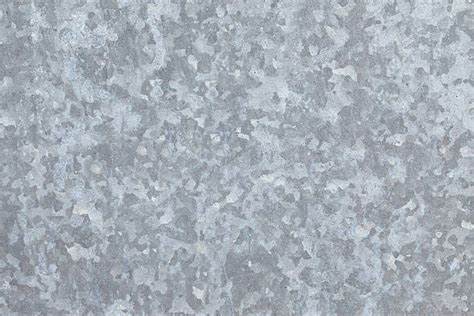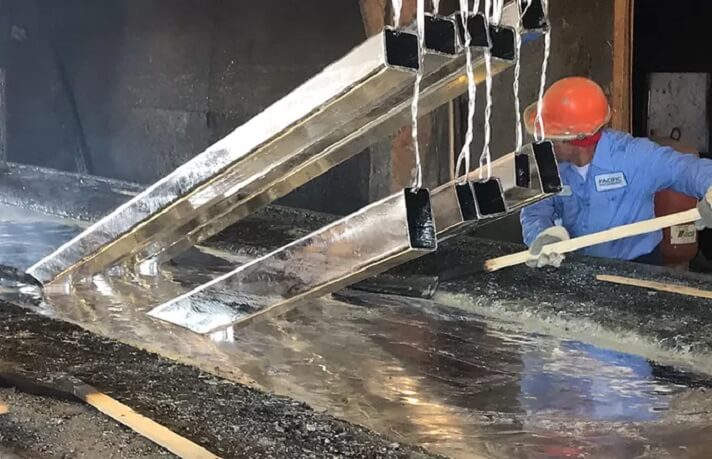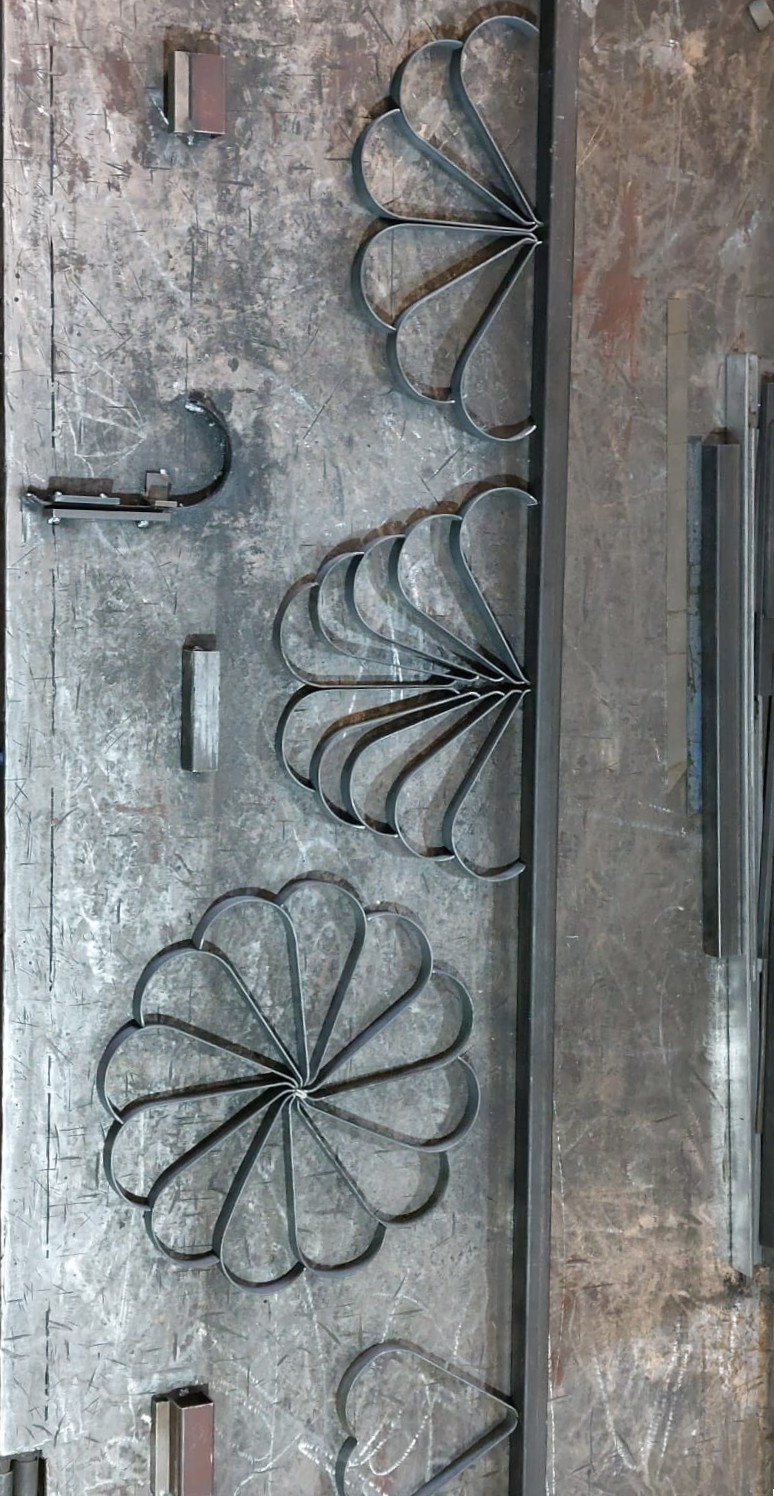Galvanising is a process that involves coating steel or iron with a protective layer of zinc to prevent rust and corrosion. This is achieved through a method called “hot-dip galvanising,” which involves immersing the metal in a bath of molten zinc. Because of the heat involved, it is not suitable for every project as it may warp thinner materials such as sheeting or cladding (which are better off being produced from stainless steel or aluminium for that reason). The zinc reacts with the surface of the steel or iron, forming a durable, protective alloy layer that adheres tightly to the base metal.
Here is a close-up of what galvanised metal looks like:

Key benefits of galvanising include:
- Corrosion resistance: It shields the metal from environmental factors like moisture and oxygen.
- Long-lasting protection: Galvanised coatings can last decades without requiring maintenance.
- Cost-efficiency: It provides a durable solution at a relatively low cost compared to other methods.
- Complete coverage: The zinc coating reaches all areas, including corners and edges, ensuring thorough protection.
This process is commonly used in external settings such as fire escapes and balustrades where the aesthetics come second to the functional use of the product, whilst still providing it with corrosion resistance for many years without much maintenance required.


